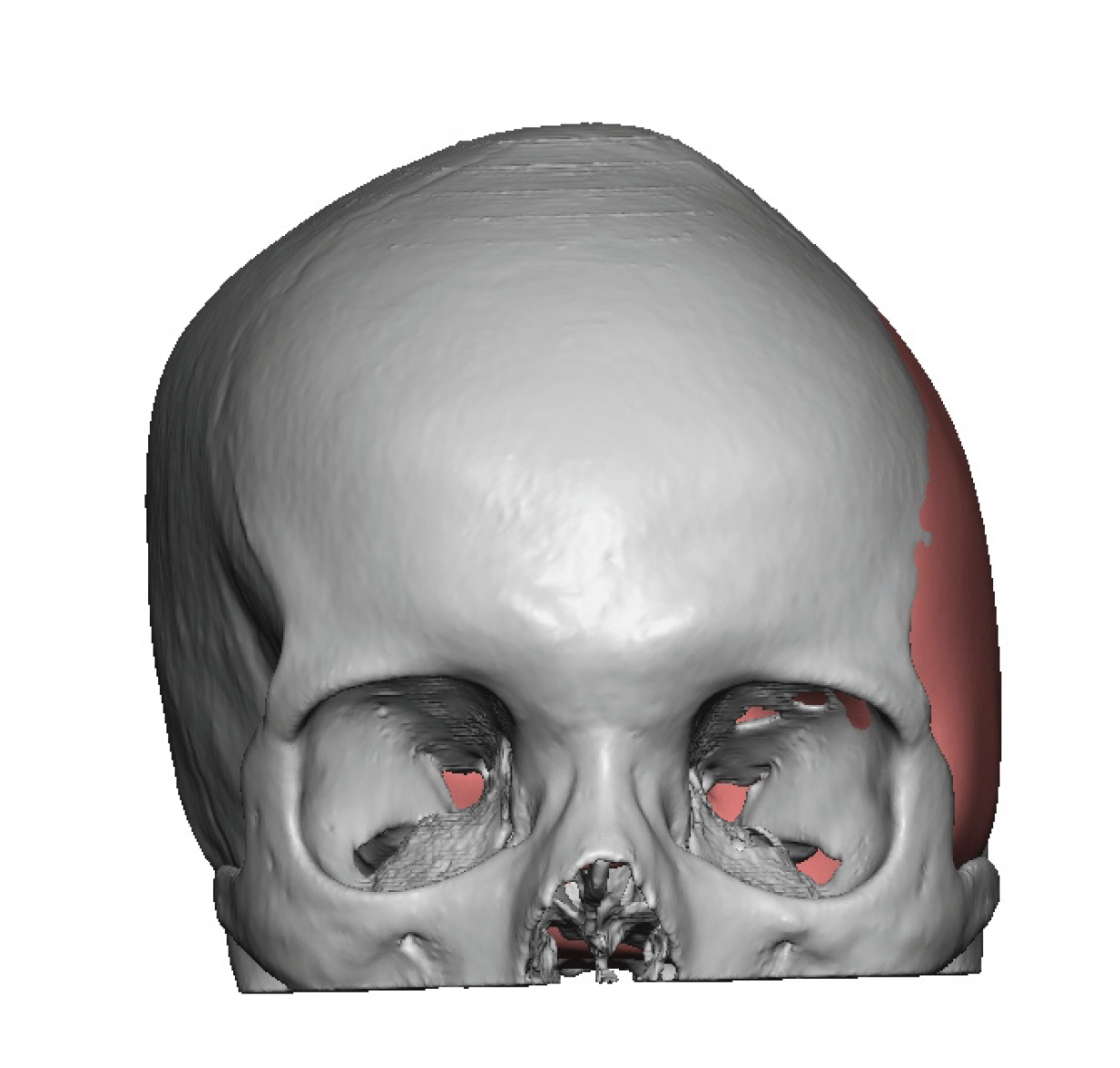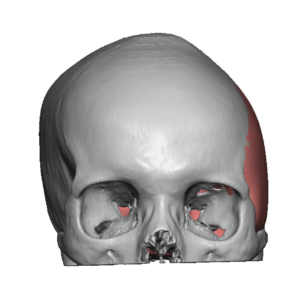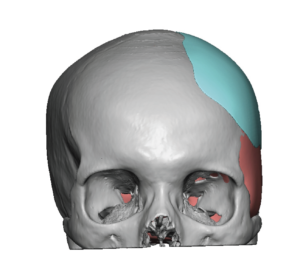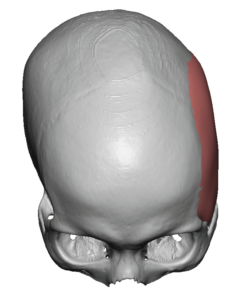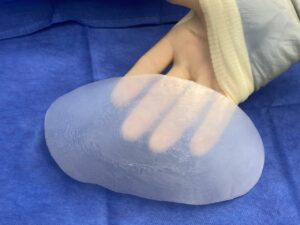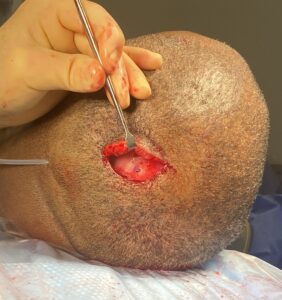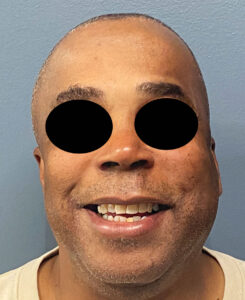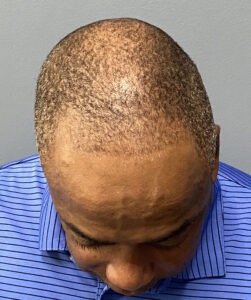Background: The shape of the skull consist of five surfaces, three of which have a distinctly convex bone shape. (front, back and top of the head) Symmetry of the head is highly depend on both sides of these convex surfaces being equal in shape. When one side is flatter than the other side a lop sided head appearance results. This is most dramatically seen when in occurs on the top of the head as the asymmetry is easily perceived in the front view.
The lop sided head shape is distinctly different from plagiocephaly. Plagiocephaly does create a lop sided head but it is in a craniocaudal direction which means it rotates around a vertical axis. Thus the flatness and head shape asymmetry s best appreciated when viewed from above. Plagiocephaly is well known to usually occur from a deformational basis like laying on one side of the back of the head, either in utero or post natal. Conversely, the other form of a lopsided head is seen in the front to back direction or the horizontal axis. This means the asymmetry is readily seen from the front, back and oblique views. Its location does not lend itself to a readily apparent deformational cause.
But just like the back of the head a custom skull implant works just as well for correcting top of the head asymmetries. With a distinct linear slope from the midline sagittal line out onto the upper temporal area this flatted side of the head stands in contrast to the rounder/fuller opposite side. The custom implant design in the front view strives to match the opposite more convex side.
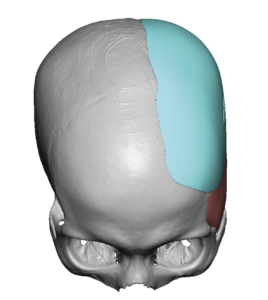
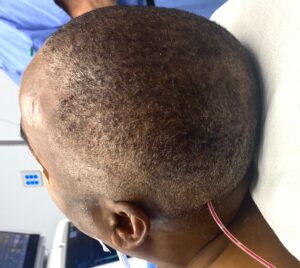
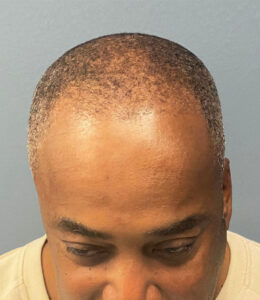
Case Highlights:
1) Skull asymmetries or the lop sided head comes in many forms but usually means one of its five surfaces is flatter or less round than the opposite side.
2) The lop-sided top of the head has one side in which the parasagital-temporal line is flatter/less round than the opposite side creating a visible asymmetric head shape.
3) A custom skull implant for the lopsided top of the head can the placed through a very small posterior scalp incision due to its longitudinal shape.
Dr. Barry Eppley
World-Renowned Plastic Surgeon

